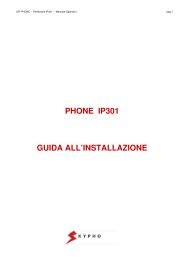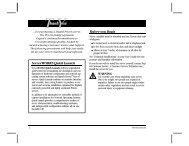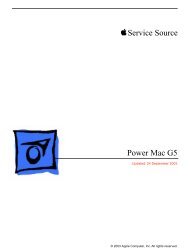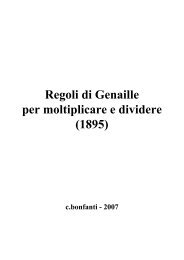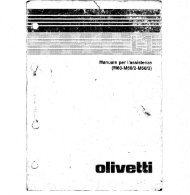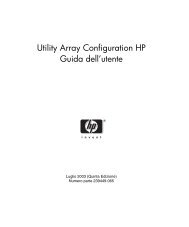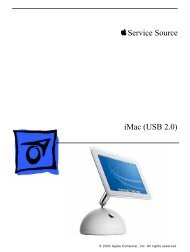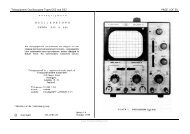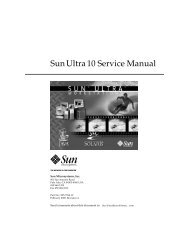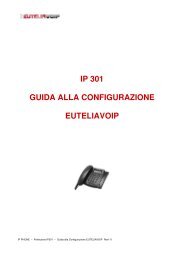HPJournal1989Jun_798.. - Dynamic Softer for Background-Images
HPJournal1989Jun_798.. - Dynamic Softer for Background-Images
HPJournal1989Jun_798.. - Dynamic Softer for Background-Images
You also want an ePaper? Increase the reach of your titles
YUMPU automatically turns print PDFs into web optimized ePapers that Google loves.
Maximizing Tape Capacity by<br />
Super-Blocking<br />
lnterrecord gaps on thetape limitthe capacity improvement<br />
attainable with data compression in the HP 79B0XC Tape<br />
Drive. Super-blocking eliminates mosf of these gaps.<br />
by David J. Van Maren, Mark J. Bianchi, and Jeffery J. Kato<br />
UPER-BLOCKING is a proprietary Hewlett-Packard<br />
method <strong>for</strong> maximizing half-inch tape data capacity.<br />
This capacity improvement is achieved by the removal<br />
of some of the interrecord gaps ordinarily placed<br />
between host data records. It is per<strong>for</strong>med in real time by<br />
the firmware residing in the cache buffer of the HP 79BOXC<br />
Tape Drive.<br />
To understand how super-blocking works, one must understand<br />
the general <strong>for</strong>mat of half-inch tapes. When a<br />
packet of data is sent from a host to a tape drive, the tape<br />
drive must place this packet on the tape in such a way that<br />
it can recover the packet and return it to the host exactly<br />
as it was received. Normally, physical gaps are placed on<br />
the tape between each data record. These gaps, which are<br />
areas on the tape containing no flux reversals (and consequently<br />
no data), guarantee that the data packets can later<br />
be individually recovered This <strong>for</strong>mat of data records with<br />
interrecord gaps is required to maintain cornpatibility with<br />
the ANSI standard <strong>for</strong> 6250 GCR tapes.<br />
A typical host will send data records to the drive in sizes<br />
that range from 4K bytes to 32K bytes. Assuming that a tape<br />
is written at 6250 bytes per inch, a typical record will be<br />
between 0.65 inch and 5.25 inches long. The minimum<br />
interrecord gap length is approximately 0.3 inch. Fromthese<br />
numbers, one can see that a tape written with 4K bytes of<br />
data will contain 69% host data and 31% blank tape. This<br />
means that about one third of the tape is wasted by interrecord<br />
gaps.<br />
Super-blocking is a <strong>for</strong>matting technique that removes as<br />
many as possible of these capacity-limiting gaps while retaining<br />
enough in<strong>for</strong>mation to separate individual records.<br />
This process will pack together as many records as it can<br />
without exceeding a maximum super-block length of 60K<br />
bytes. Included at the end of each super-block is in<strong>for</strong>mation<br />
that is used in the data retrieval process to separate the<br />
super-block into its original records. A graphical illustration<br />
of the super-blocklng process is shown in Fig. 1.<br />
Fig. 2 demonstrates the effect that decreasing the record<br />
size has upon overall tape capacity. As the size of the data<br />
records gets smaller, there is a corresponding decrease in<br />
the amount of data that can be stored on one tape. The<br />
advantage of super-blocking is that it makes the tape capacity<br />
independent of record size. The effect of super-blocking<br />
is to minimize the portion of tape capacity lost to interrecord<br />
gaps. For example, a normal tape written with 16K-byte<br />
records will waste 12.5M bytes compared to a super-blocked<br />
tape.<br />
What Fig. 2 does not show is the effect on capacity of<br />
file marks. A file mark is a special pattern written on the<br />
tape that denotes a break in the host data. A file mark uses<br />
a very small portion of tape. However, there is an additional<br />
gap <strong>for</strong> each file mark. Because of this extra gap, superblocking<br />
also absorbs all file marks and keeps track of where<br />
they were originally located. For simplicity, it is assumed<br />
that the ratio of the number of file mark gaps to the number<br />
of data record gaps is typically very small. There<strong>for</strong>e, the<br />
effect on tape capacity of the absorption of file marks will<br />
not be considered in this article. One should note that the<br />
advantage of super-blocking <strong>for</strong> increased tape capacity<br />
would only improve <strong>for</strong> each file mark requested by the<br />
host.<br />
As explained in the article on page 26, the HP 79B0XC<br />
Tape Drive is capable of per<strong>for</strong>ming data compression on<br />
the data that it receives. Referring to Fig. 2, a tape written<br />
with 16K-byte records will contain 1 54M bytes of host data.<br />
If this data were compressed by the HP 79B0XC and exhibited<br />
a compression ratio of 4:1, one would expect the tape<br />
capacity to increase by a factor of four to 616M bytes. How-<br />
Preblocked Records Size:16K Bytes<br />
nry/ryry/ryY<br />
HEEEI<br />
Format Intormation /<br />
Super-Blocked Becords<br />
rHEt<br />
Size:60K Bytes<br />
Fig. 1. The super-blocking Pro'<br />
cess combtnes normal rccords<br />
into super-blocks as /arge as 60K<br />
bytes<br />
32 HEWLETT-PACKARD JoURNAL JUNE 1989




